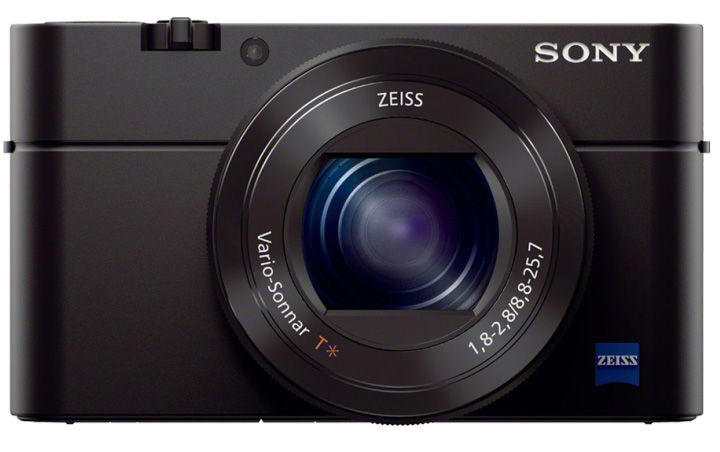
There’s no need to sacrifice quality for size when it comes to your digital camera. The Sony RX100 III is a compact camera that rivals the larger (and heavier) DLSR cameras. It’s as light as a smartphone but takes far superior photos.
This is the next generation camera from Sony’s first version, the Sony Cybershot RX100, that was released in 2012. The Sony RX100 III is a faster, smarter and improved version.
Here’s what you can expect from this powerhouse pocket camera.
Compact powerhouse
Sony equipped with RX100 III with a fast, wide lens as well as an electronic viewfinder, flip-out screen and Wi-Fi—that’s a lot to pack into a compact camera. Even with all these features, the RX100 III remains sleek and light. At 101.6 x 58.1 x 41.0 mm (4 “× 2 3/8 ” × 1 5/8 “) it’s slim enough to slip into a pocket or purse. It weights only 263 grams (9.3 oz.) but it you add the battery and memory stick it bulks up to 290 grams (10.2 oz.).
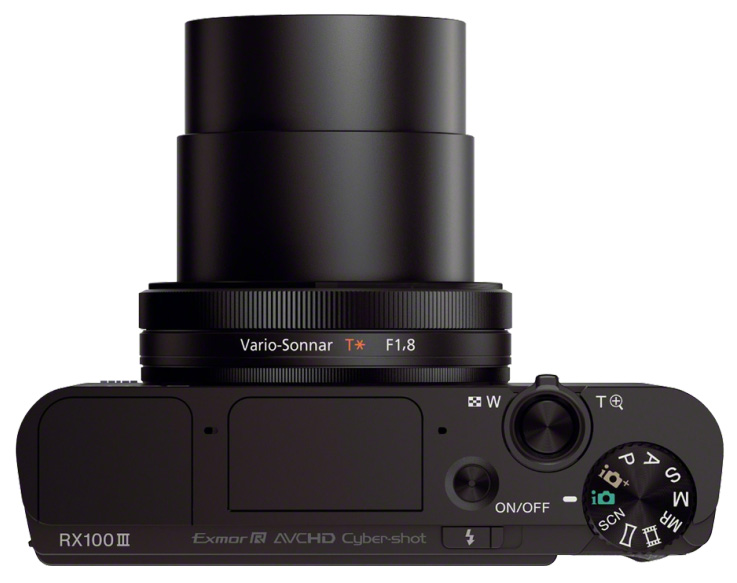 Faster lens, better photos
Faster lens, better photos
The RX100 III is also more responsive taking better pictures than other point-and-shoot digital cameras. It’s got a fast and wide lens that performs well in all kinds of settings with all types of lighting. The ZEISS Vario-Sonnar 8.8-25.7mm (24-69mm, full-frame equivalent) lens has an aperture of f/1.8 (wide)-f2.8 (telephoto) – impressive for a compact camera. The faster lens means it can handle action shots with greater ease.
Under the hood is also notable with a 2.5 mm (1”) Exmor R BSI-CMOS sensor combined with Sony’s latest Bionz X processor, which the company says is three times faster than its previous processors. A built-in ND filter also allows you to use slower shutter speeds in bright lighting conditions.
It’s got an excellent light sensitivity range of ISO 125 to 25,600 and a shutter speed between 4 and 1/2,000 seconds. Capture stills in continuous mode at 10 picture per second; record 1080p movies at up to 60 fps and 720p movies at up to 120 fps to play back in slow motion. Photographers looking for more control over aperture and shutter for specialized effects will appreciate the ability to use the Auto ISO when in Manual mode.
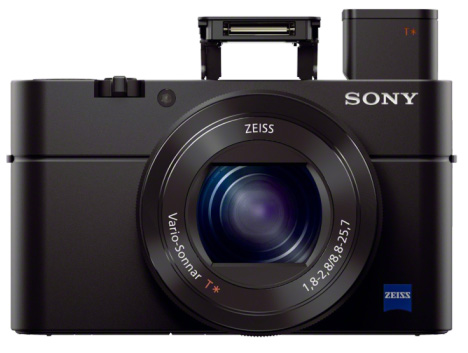 Pop-up cool
Pop-up cool
The feature that is getting the most buzz is the RX100 III‘s pop-up electronic viewfinder. Push a switch on the left side and the EVF rises up out of the corner in place of the flash, (which has been moved to the centre).
The OLED display is excellent with an 800×600 pixel SVGA resolution (1.4-million-dot) and magnification of 0.59x (35mm equivalent)– excellent for a compact camera. The Zeiss T* coating on the glass reduces reflection without needing an enclosed eyepiece. The coolest part: The EVF also turns the camera on or off.
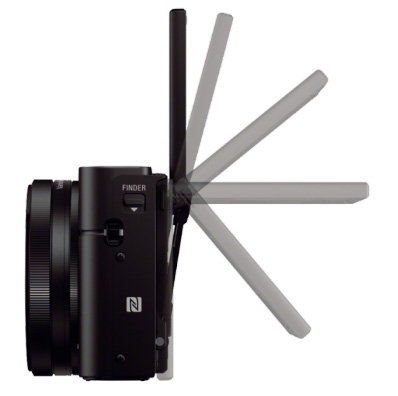 Flexible viewing
Flexible viewing
The RX100 III‘s LCD screen rotates from 45 degrees up to 180-degrees. If you tilt the screen up to the full 180-degrees and the camera acts like a smartphone and automatically gets ready for a selfies. Face detection gets turned on, the aperture opens up to the largest settings (for a blurred background) and the timer is activated. You’ll have three seconds to pose before your selfie gets snapped.
Thanks to the w/ZEISS T coating and Sony’s WhiteMagic technology that adds a fourth white pixel, you’ll have a brighter screen with better resolution without sapping your battery. You also have the option for the viewfinder and rear screen to show different displays. Use the viewfinder to show just the image and the LCD panel to show the Quick Navi settings so you can quickly set up your shot.
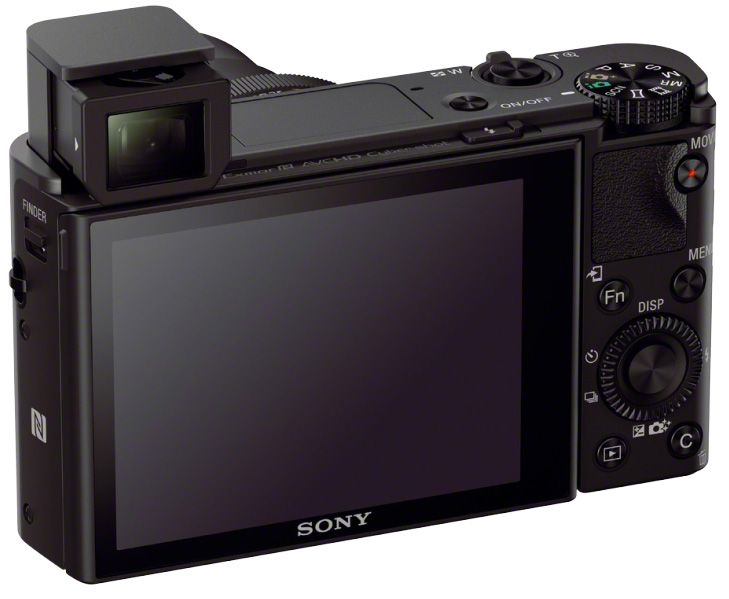 Smooth operation
Smooth operation
On the back of the Sony RX100 III you’ll find the control cluster dial that is adjustable clockwise to display mode, flash mode, exposure compensation and drive mode/timers. Activate a shortcut menu or playback in Wi-Fi mode using the Fn button. A “C” button lets you create customizable function menu and the “MR” spot on the mode dial will store up to three sets of your favourite settings so if you find yourself shooting in the same locations, set-up time is minimal.
From left to right on the top of the camera is the EVF and flash with surrounding stereos mics. (The RX100 III doesn’t have a port to plug in an extra mic.) The switch for the flash is on the top of the camera where you’ll have five modes: Auto, fill-flash, slow sync, rear sync and off all with a recycling time of approximately 34 seconds.
Next to the flash are the power button, shutter release/zoom controller, and mode dial. The mode dial has the usual suspects, including manual exposure, MR (memory recall), video, Sweep Panorama, and scene modes. You’ve got a wide selection of scene Mode to choose from including Anti Motion Blur, Fireworks, Gourmet, Handheld Twilight, High Sensitivity, Landscape, Macro, Night Portrait, Night Scene, Pet Mode, Portrait, Sports Action, and Sunset.
There is only one I/O on the right side with a Multi Interface port used for USB, charging, and the optional remote control as well as a micro HDMI port. The battery port is also on the side and uses a NP-BX1 with 4.5Wh of power. This camera does get fewer shots at only 320 stills dropping to 230 stills if you use the electronic viewfinder.
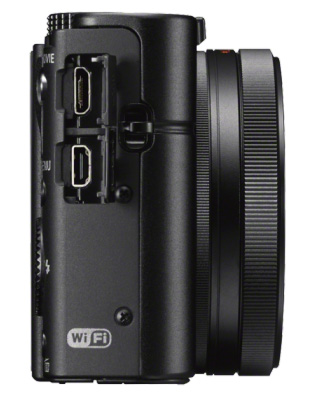 High quality home video
High quality home video
The video is set into the body of the camera, right next to the thumb pad. You have a wide range of audio and video formats to choose from including MP4 and XAVC S. Another huge improvement is the option to record full HD video at 50Mbps, or up to 100fps in the XAVC S format. There is also dual video recording in high quality AVCHD/XAVC S footage alongside a smaller MP4 format file that is easier to share electronically.
The IT camera
The Sony RX100 III has raised the bar significantly creating a standout compact camera that leaves its rivals behind. Powerful stabilization, the pop-up EVF, new video modes and a brighter LCD display combined with a fastest and more sensitive lens, means the Sony RX100 III is currently the hottest compact camera.
Pre-order yours today. Best Buy has many other cameras to choose from.



